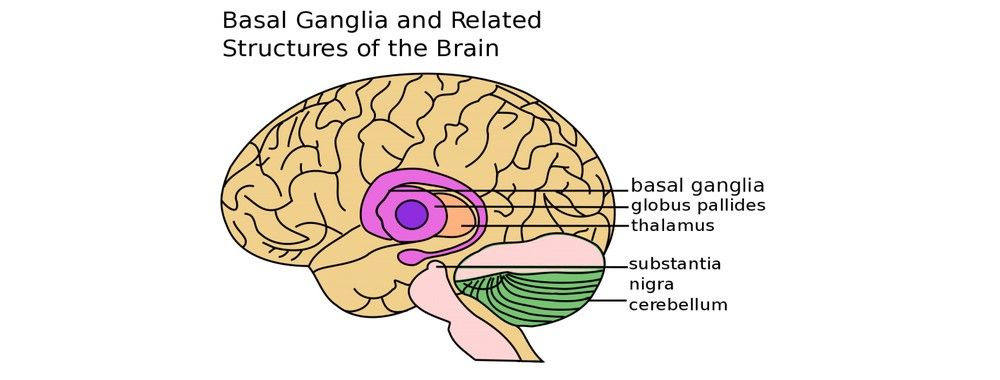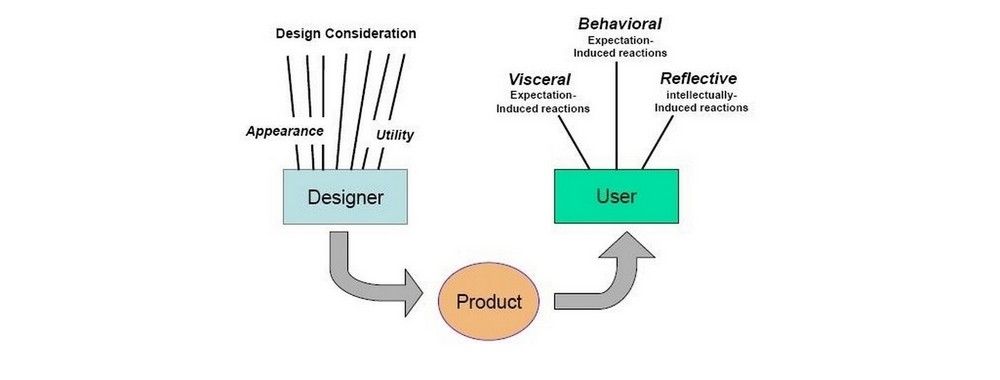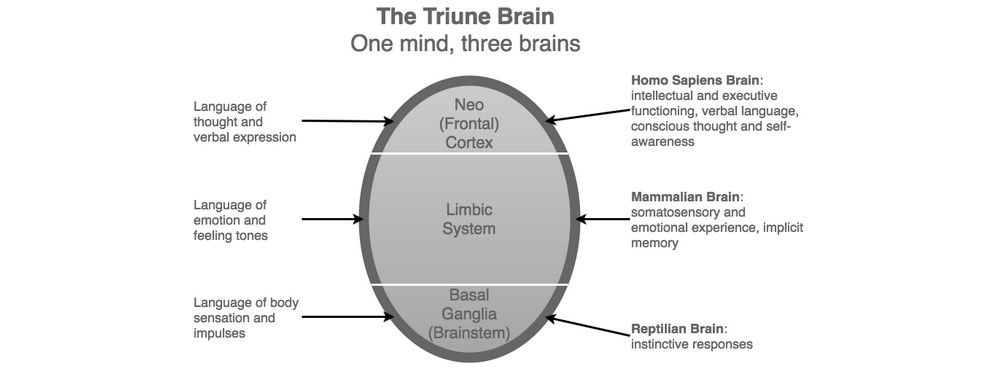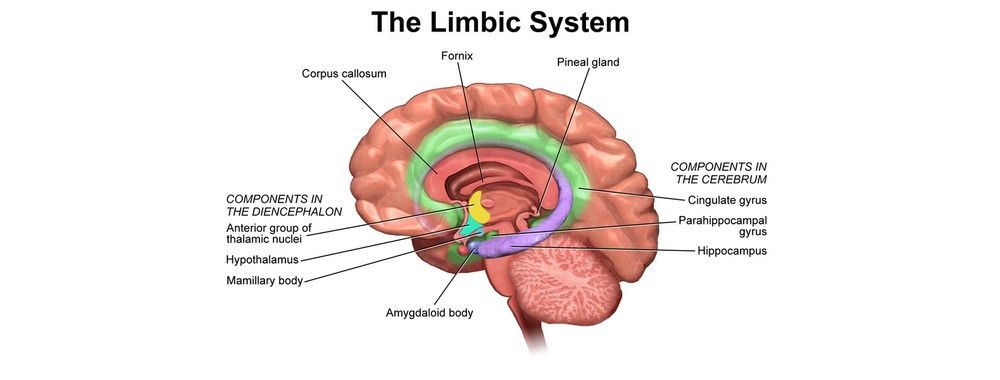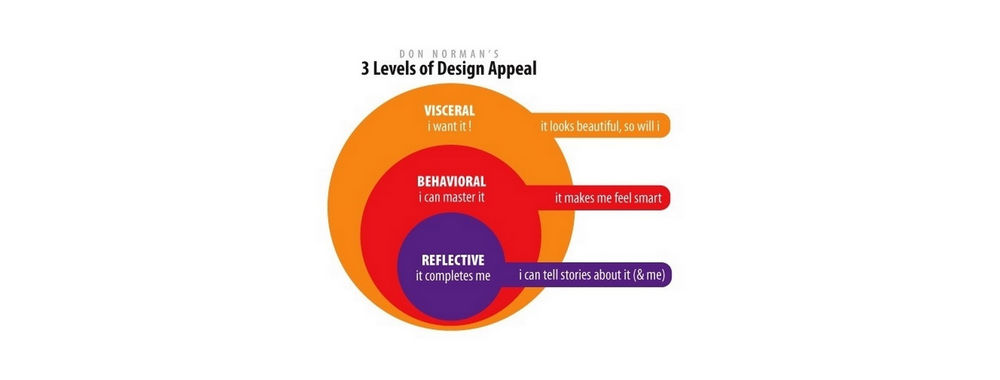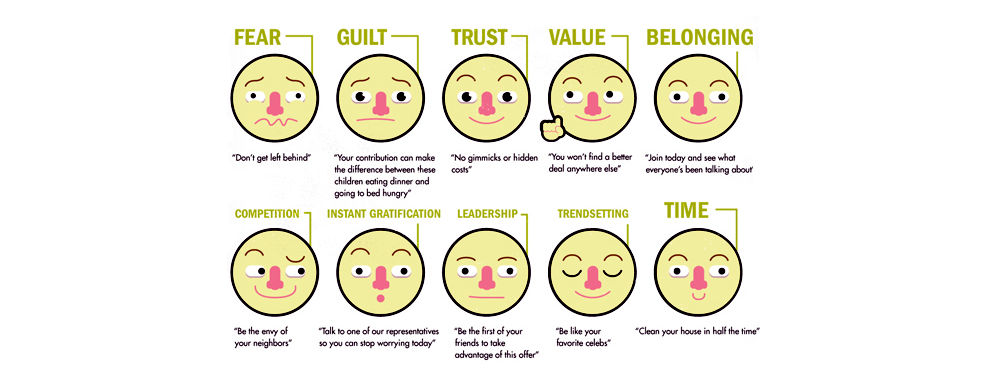The triune brain model may not be an entirely accurate depiction of the human brain and its development, but the concept of our three brains (reptilian, paleomammalian, and neomammalian) represents a useful guide for us as designers who are looking to capture what it means to be a human user. Thus, many of the insights we derive in this way can be highly instrumental in our fine-tuning products that latch with their target users in the best way possible.
The 'Neomammalian' brain represents the third and outermost structure of Paul McLean's 'Triune Brain' model. MacLean proposed the neomammalian brain is responsible for abstract, rational thought, foresight, hindsight, and insight, which could be thought of as the component functions of Don Norman's reflective processing concept. The neomammalian brain consists of the neocortex and the surrounding thalamic structures. The neocortex is one of the brain structures that help us distinguish the human brain from that of any other animal. In humans, the neocortex is significantly larger, and while other animals have smooth neocortices, the human neocortex is grooved and ridged, which vastly increases its surface area.
The role of the neomammalian brain
The neomammalian brain is thought to be the last major development in the evolution of the human brain, due to its being the outermost structure and imaging studies which have shown this region is implicated in higher-order thinking. Functions of the neomammalian brain include analysis, sensory processing, learning, and memory, motor control, decision-making, reasoning, and problem-solving. The primary and overarching responsibility of the neocortex is to determine what is going on in the outside world. This function has a number of components, such as moving our sensory organs so they are in the best possible position for the receipt of perceptual information, processing the stimulus, storing an accurate representation, and mentally manipulating this representation so as to determine the best possible response.
Studies involving patients with some form of prefrontal damage (i.e. through brain injury or a congenital disorder) have shown the significant role this structure plays in higher-order thinking. When prefrontal cortex functioning is compromised, our short-term memory is usually affected, which often has a catastrophic effect on our ability to make sense of and form a cohesive representation of the world. The prefrontal cortex receives 'information' (in the form of neural activity) from various regions of the brain; then it consolidates this information into a meaningful and practicable representation of the world. Therefore, anything that impedes the functioning of the prefrontal cortex is likely to affect many of the qualities that separate us from the rest of the animal kingdom.
The Take Away
The neomammamilian brain represents the 'third brain' of Paul McLean's 'Triune Brain' model. This region is seen as the brain structure responsible for the 'self' (i.e. what makes you 'you'). The neomammalian brain consists of various structures located on the outermost section of the brain, such as the neocortex and other thalamic structures, and is in control of higher-order functions, such as learning and memory, problem-solving, decision-making, and reasoning. Perhaps most importantly, the neomammalian brain receives, analyzes, and converts information from the rest of the brain to help us form an accurate and usable representation of the world for action. Despite the criticism this model has taken for oversimplifying matters, by viewing users and consumers in terms of their 'three brains', we can strive for the complete experience, encompassing our primal, emotional and rational qualities. Therefore, the triune brain model may not be an entirely accurate depiction of the human brain and its development, but the concept of our three brains (reptilian, paleomammalian, and neomammalian) represents a useful guide for designers looking to capture what it means to be a human user.
References & Where to Learn More
Hero Image: Copyright holder: the Author, Copyright Terms and License: Public Domain
Course: The Brain and Technology: Brain Science in Interface Design
Rakic, P. (2009). “Evolution of the neocortex: a perspective from developmental biology”. Nature Reviews Neuroscience, 10(10), 724-735.


